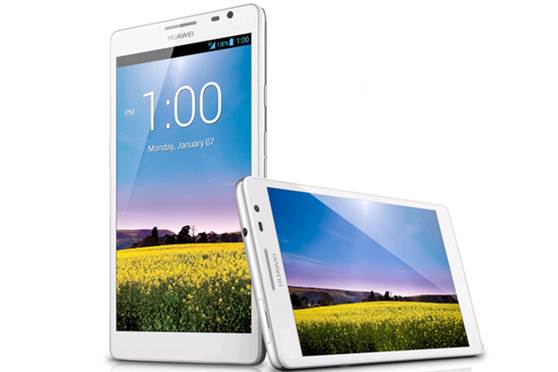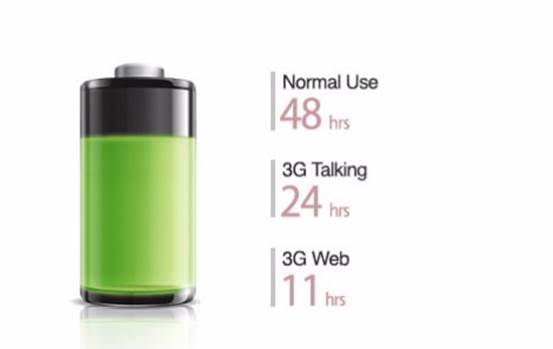Performance and battery life
Several months between the end of Ascend
2012 line and a 2013 product series don’t lead to the huge leap in performance.
Ascend Mate again runs one of the HiSilicon K3V2 SoC of Huawei, this time at
higher speed: 1.5GHz. while it’s a quad-core processor, it still bases on the
older Cortex-A9 architecture of ARM instead of the newer A15 or a custom design
like the Snapdragon family of Qualcomm. There’re lots of possibilities that any
improvements from Huawei doubling RAM to 2GB; we don’t have any problem when
open some apps at the same time.
Huawei
Ascend Mate
·
Quadrant 2: 5,619
·
Vellamo 2 HTML: 1,663
·
AnTuTu 3: 15,729
·
SunSpider 0.9.1 (ms): 1,521
·
GLBenchmark Egypt 2.5 HD Offscreen (fps): 7
·
CF-Bench: 13,424

Huawei
Ascend Mate
LG
Optimus G Pro
·
Quadrant 2: 12,435
·
Vellamo 2 HTML5: 2,254
·
AnTuTu 3: 19,300
·
SunSpider 0.9.1 (ms): 904
·
GLBenchmark Egypt 2.5 HD Offscreen (fps): 27
·
CF-Bench: 20,019

LG
Optimus G Pro
Samsung
Galaxy Note II
·
Quadrant 2: 6,819
·
Vellamo 2 HTML5: 1,814
·
AnTuTu 3: 17,874
·
SunSpider 0.9.1 (ms): 1,075
·
GLBenchmark Egypt 2.5 HD Offscreen (fps): 17
·
CF-Bench: 15,244

Samsung
Galaxy Note II
Unfortunately for Huawei, the rival stay still
ever since K3V2 released. Samsung has just increase fire-power of Exynos 4 Quad
of Galaxy Note II at the time we review D1 Quad XL, and LG Optimus G Pro has
the luxury of Snapdragon 600. While Huawei unnecessarily hope to beat LG or
Samsung in raw performance, the generation gap is a little too obvious
according to our likes: what used to be a premium processor now reaching closer
to the cheap-priced model.
The limits are most realizable on graphics
performance. GLBenchmark result suggests that’s available, but launching some
games clarifies the problem more. Though some old games such as Riptide GP
runs smoothly, the heavy games such as Real Racing 3 has reduced the
frame rate down to 1 digit. With 1 smartphone which size can easily lead to mobile
gaming, that’s not just a small disappointment. Ideally, Huawei should attach K3V3
with the opening Ascend Mate, not the next model.
However, you can forgive that slow
performance after taking a look at battery life. Huawei takes advantages of the
“supreme” 4,050mAh battery, and you don’t have to save it to see all the
benefits. With Ascend Mate in a regular power profile, we can repeat 7,20p video
in one of the critical testing conditions (screen at half brightness, WiFi on, but
no connection, the social apps in the background) in 12 hours 40 minutes – one
of the best results we’ve ever seen. It’s 2 hour longer than Galaxy Note II and
5 hour more than Optimus G Pro. It’s still undefined of Galaxy Mega 6.3, though
its 3,200mAh battery doesn’t promise an equal fight.

Huawei
takes advantages of the “supreme” 4,050mAh battery, and you don’t have to save
it to see all the benefits.
The real-time test is more impressive. Ascend
Mate can easily last over a whole day of using with some battery life remaining.,
and 4 hours of heavy test makes the phone battery remain over half of its
capacity. If there’s anything to be complained, that will be the recharging
time. while you don’t have lots of problems to charge the battery to its full
when using the exclusive fast-charging adapter that Huawei provides in the box,
the USB port of the regular laptop or phone adapter can take 4 hours to do the
same thing. Which means that, we prefer having the luxury of slowly charging
the device at our home rather than having to make a quick recharge at the
midday at the company.
Mobile performance won’t impress anyone,
but we don’t expect much when there’s no sign of LTE in the device. we received
an unlock, network-neutral Ascend Mate that can use HSPA+ data 21Mbps network
on 850/900/1,700/1,900/2,100 band and reach the low average speed bit usable:
4.2Mbps/download and 2.1Mbps/upload on the Telus network in Ottawa, Canada. Call
quality on that network is pretty good, both incoming and outgoing; it’s not
very clear, but there’s no big complaints, even with the background noise.
Media performance is stable, despite being
damaged a little by the absent MHL. Not one satisfies with the built-in
speakerphone, which is not pretty loud, but they can be pleased with Dolby
Digital Plus sound. The same to Beats processing, its equalization software
fills the sound field on the headphones. The default audio profile is slightly
heavy in bass, but you can choose another sound or turn the Dolby software off
if it proves to be excessive. External video is limited with the DLNA media sharing
when there’s no MHL to rely on.
Conclusion
Sometimes Ascend Mate is considered a
2-side smartphone. It’s a good prospective premium phone, with large screen and
longer battery life. If you highly appreciate these 2 factors than other
factors, you may have found the ideal mobile companion: Mate surpasses Galaxy
Note II and Optimus G Pro on these 2 aspects, and it can surpass Galaxy Mega
6.3 in the battery test. Ascend Mate splits groups in terms of software. While
we normally prefer the existing Android interface, Huawei has molded Emotion UI
into a really unique experience and sometime more excellent, as long as you
don’t mind that loss app drawer.
The other half is the classic Huawei: which
means, it’s a cheap-priced device which is sold in a cheaper price than the
expensive rivals. With all the amazing decorations on the outside of Ascend
Mate, it is actually a saving phone on the inside with older processor, only 3G
data, modest storage and mostly recycled camera tech. that’s easier to accept
than those who only pay attention to the battery life and screen size, but this
design sacrifices stop Mate from being the best among the group. We also want
to see how Galaxy Mega 6.3 compares. After all, the upcoming “supreme” phone of
Samsung has LTE, 16GB optional storage and the more ripe software pack
(sometimes criticized).

Sometimes
Ascend Mate is considered a 2-side smartphone
Ascend Mate may prove to be best reasonable
if you can buy it at cheaper price than its rivals. Good news is that you can,
depending on where you live. Ever since this article, a store like Expansys UK has
sold Ascend Mate with the price of $508, $166 cheaper than the price of $674 of
Galaxy Note II. In china, it has the price of $438. Americans won’t save much
compared to Galaxy Note II (only $55 different at Expansys), but the phone is
still one of the cheapest in its category – especially if you’re calculating
the cost by each inch of the screen. We prefer using Ascend Mate, but we also
accept that it’s a dedicated too, not a multi-function phone.
Info
·
Price: $495 (unlock)
Advantages
·
Enormous, compelling screen
·
Long battery life
·
Cheap price
Disadvantages
·
Slow
·
Commonplace camera
·
Small storage
Key point
·
Ascend Mate surpass in terms of screen size and
battery life, but it’s a cheap-price phone on the inside.
|
Huawei Ascend
Mate
·
Dimensions:163.5x85.7x9.9mm (6.5x3.4x0.4 inch)
·
Weight: 6.99 ounce (198g)
·
Screen size: 6.1 inch
·
Screen res: 1,280x720 (241ppi)
·
Screen type: IPS+ LCD
·
Battery: 4,050mAh
·
Internal storage: 8GB (4.68GB available)
·
External storage: microSDHC, max 32GB
·
Rear camera: 8MP, BSI, AF, LED flash
·
Front camera: 1MP
·
Video recording: 1,080 rear (720p front)
·
NFC: No
·
Radio: HSPA+/UMTS: 850/900/1,700/1,900/2,100;
GSM/GPRS: 850/900/1,800/1,900
·
Bluetooth: V4.0+BLE
·
SoC: Quad-core 1.5Hz Huawei HiSilicon K3V2;
40nm, 16-core GPU, 64bit memory
·
RAM: 2GB
·
Entertainment: DLNA, Dolby Digital Plus audio
·
WiFi: 2 bands, 802.11a/b/g/n; WiFi Direct
·
Wireless charge: No
·
OS: Android 4.1.2, Emotion UI
|